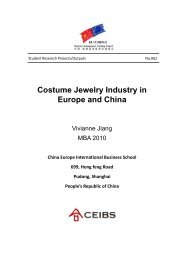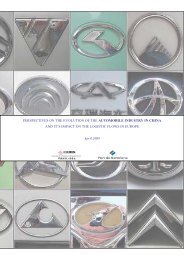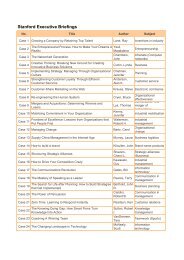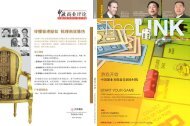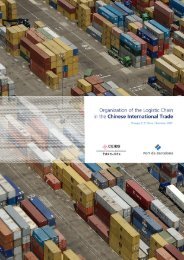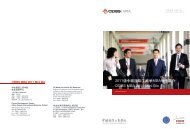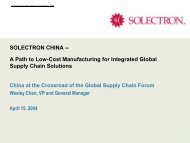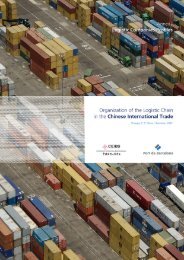Capital Abundance and Developing Country Production Patterns
Capital Abundance and Developing Country Production Patterns
Capital Abundance and Developing Country Production Patterns
Create successful ePaper yourself
Turn your PDF publications into a flip-book with our unique Google optimized e-Paper software.
1 Introduction<br />
The st<strong>and</strong>ard Heckscher-Ohlin (HO) model has been constantly challenged but has remained<br />
at the center of modern trade theory. The message from recent empirical work (e.g. Davis <strong>and</strong><br />
Weinstein, 2001) is that the HO model surely does not fit the data but the role of resources<br />
remains important <strong>and</strong> cannot be denied. One factor identified by Davis <strong>and</strong> Weinstein (2001)<br />
that significantly helps explain global (factor) trade is production specialization due to unequal<br />
factor prices across countries, or the existence of multiple diversification cones. Studies by Schott<br />
(2001) <strong>and</strong> others provide additional evidence of multiple diversification cones. Accepting that<br />
resources still matter importantly <strong>and</strong> there is no factor price equalization (non-FPE), we face<br />
a question: Do resources matter differently in a non-FPE world?<br />
In this paper we examine how resources affect production patterns of developing countries.<br />
To compare the resource-output relationship under non-FPE with that under FPE, we develop<br />
a simple model. In the model we distinguish between “HO goods” defined by capital intensity<br />
<strong>and</strong> “industries” that group goods of different capital intensities. Assuming two industries each<br />
containing two goods (one labor-intensive, one capital-intensive) <strong>and</strong> that the capital (labor)-<br />
intensive industry contains a larger output share of the capital (labor)-intensive good, we show<br />
that, under FPE, an increase in a country’s capital abundance, by exp<strong>and</strong>ing the output of the<br />
capital-intensive HO good <strong>and</strong> contracting the output of the labor-intensive HO good, increases<br />
the output of the capital-intensive industry <strong>and</strong> decreases the output of the labor-intensive<br />
industry.<br />
This result, stated as Proposition 1, establishes the Rybczynski (1955) prediction<br />
between capital abundance <strong>and</strong> outputs of heterogeneous industries.<br />
Our model yields a sharply different prediction under non-FPE. For a small open laborabundant<br />
country in a non-FPE world, it produces only the labor-intensive goods of the two<br />
industries. An increase in the country’s capital abundance exp<strong>and</strong>s the total output of laborintensive<br />
goods. Without further characterization of the two industries we cannot determine the<br />
1



